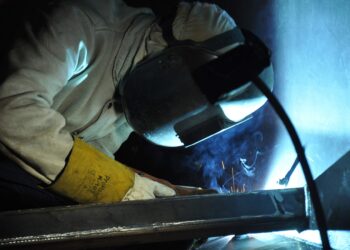
Archaeologists have discovered more than 100 Bronze Age enclosures in what is now Serbia, forming a belt stretching 150 kilometres along the Tisza River, a major north-south artery dividing the Pannonian Plain. The structures were part of a vast network of settlements that took part in a booming, continent wide bronze trade that flourished some 3600 years ago. The walls and ditches protected small settlements, and concentrations of artifacts and household refuse suggest each enclosure was home to a handful of extended families.
The reason for the need for defensive earthworks remains unclear, but most of the newly discovered enclosures are just 5 or 10 kilometres apart, each visible from its closest neighbours. They all shared similar pottery styles and architecture, suggesting that the people living here were cooperating. Researchers used Google Earth to identify circular earthworks and deep ditches like this one in northern Serbia, which covers at least 40 hectares.
The settlements were also linked to a wider world through the trade in bronze and other materials, part of a continental flourishing in trade and connectivity prompted by new metallurgical techniques. The 3 centuries after 1600 B.C.E. also marked the heyday of such civilisations as the Mycenaeans in Greece, the Hittites and Babylonians in the Near East, and Egypt’s New Kingdom.
The new sites add to others found recently in Hungary and Romania to form what the authors call the lower Pannonian network. Instead of the densely packed, walled cities favoured in Egypt, the Near East, and Greece, the people of the Pannonian Plain left themselves lots of elbow room.
Other experts say lots of questions remain, such as whether the rings were seasonal gathering places, ceremonial centres, or cattle pens. By 1200 B.C.E., something had gone wrong, and the enclosures were deliberately dismantled. The sheer size of the enclosures means they may remain enigmatic for years to come, but they’ve opened up a whole new avenue for excavation and research.






